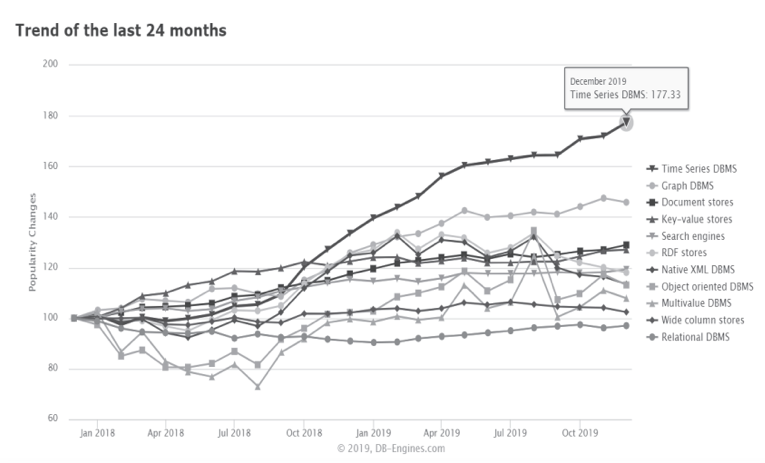WebAssembly (Wasm) 正在成為一個廣受歡迎的編譯目標,幫助開發者構建可遷移平臺的應用。最近 Greptime 和 WasmEdge 協作,支持了在 WasmEdge 平臺上的 Wasm 應用通過 MySQL 協議讀寫 GreptimeDB 中的時序數據。
什么是 WebAssembly
WebAssembly 是一種新的指令格式,同時具備了跨平臺和接近原生機器代碼的執行速度。通過將 C/C++ 或 Rust 代碼編譯成 WebAssembly ,可以在瀏覽器中提升程序的性能。而在瀏覽器外的其他運行環境,尤其是 CDN 或 IoT 的邊緣端,我們也可以利用 WebAssembly 實現沙盒、動態加載的插件機制等高級的功能。
什么是 WasmEdge
WasmEdge 是 CNCF 的沙箱項目,提供上文提到的沙盒能力,允許開發者在 WebAssembly 標準的基礎上,進一步擴展其能訪問的資源和接口。例如,WasmEdge 為 Wasm 提供了額外的 TLS、網絡能力和 AI 能力,大大豐富了使用場景。
WasmEdge GitHub 地址:
https://github.com/WasmEdge/WasmEdge
安裝 GreptimeDB 和 WasmEdge
如果你已經安裝了 GreptimeDB ,可以跳過這個步驟。
下載 GreptimeDB 并運行:
curl-Lhttps://github.com/GreptimeTeam/greptimedb/raw/develop/scripts/install.sh|sh ./greptimestandalonestart
安裝 WasmEdge:
curl-sSfhttps://raw.githubusercontent.com/WasmEdge/WasmEdge/master/utils/install.sh|bash-s
編寫 GreptimeDB 的 WASM 應用
在 WasmEdge 中,我們可以使用 MySQL 協議,讓 Rust 語言編寫的應用程序連接到 GreptimeDB。
首先通過cargo new創建一個新的 Rust 項目,我們的編譯目標將是wasm32-wasi,可以在項目根目錄下創建.cargo/config.toml文件,指定默認編譯目標,之后就無需在每次cargo build命令后專門指定--target了。
#.cargo/config.toml [build] target="wasm32-wasi"
編輯Cargo.toml增加依賴。mysql_async的應用需要tokio運行時,WasmEdge 維護了這兩個庫的修改版本,使他們能夠編譯成 WebAssembly 代碼,并且運行到 WasmEdge 環境中。
[package]
name="greptimedb"
version="0.1.0"
edition="2021"
[dependencies]
mysql_async_wasi="0.31"
time="0.3"
tokio_wasi={version="1",features=["io-util","fs","net","time","rt","macros"]}
進一步編輯src/main.rs文件,加入數據庫訪問的邏輯。這段代碼將演示:
通過環境變量讀取數據庫地址,并創建連接池;
執行 SQL 語句創建數據表;
插入數據;
查詢數據。
定義數據結構:
#[derive(Debug)] structCpuMetric{ hostname:String, environment:String, usage_user:f64, usage_system:f64, usage_idle:f64, ts:i64, } implCpuMetric{ fnnew( hostname:String, environment:String, usage_user:f64, usage_system:f64, usage_idle:f64, ts:i64, )->Self{ Self{ hostname, environment, usage_user, usage_system, usage_idle, ts, } }
}
初始化數據庫連接池:
usemysql_async::{
prelude::*,Opts,OptsBuilder,Pool,PoolConstraints,PoolOpts,Result,
};
usetime::PrimitiveDateTime;
fnget_url()->String{
ifletOk(url)=std::var("DATABASE_URL"){
letopts=Opts::from_url(&url).expect("DATABASE_URLinvalid");
ifopts
.db_name()
.expect("adatabasenameisrequired")
.is_empty()
{
panic!("databasenameisempty");
}
url
}else{
"mysql://root:pass@127.0.0.1:3306/mysql".into()
}
}
#[tokio::main(flavor="current_thread")]
asyncfnmain()->Result<()>{
//Alternative:The"easy"waywithadefaultconnectionpool
//letpool=Pool::from_url(&*get_url()).unwrap());
//letmutconn=pool.get_conn().await.unwrap();
//Belowwecreateacustomizedconnectionpool
letopts=Opts::from_url(&*get_url()).unwrap();
letbuilder=OptsBuilder::from_opts(opts);
//Theconnectionpoolwillhaveaminof1andmaxof2connections.
letconstraints=PoolConstraints::new(1,2).unwrap();
letpool_opts=PoolOpts::default().with_constraints(constraints);
letpool=Pool::new(builder.pool_opts(pool_opts));
letmutconn=pool.get_conn().await.unwrap();
Ok(())
}
創建數據表:
//Createtableifnotexists r"CREATETABLEIFNOTEXISTSwasmedge_example_cpu_metrics( hostnameSTRING, environmentSTRING, usage_userDOUBLE, usage_systemDOUBLE, usage_idleDOUBLE, tsTIMESTAMP, TIMEINDEX(ts), PRIMARYKEY(hostname,environment) );" .ignore(&mutconn) .await?;
插入數據:
letmetrics=vec![
CpuMetric::new(
"host0".into(),
"test".into(),
32f64,
3f64,
4f64,
1680307200050,
),
CpuMetric::new(
"host1".into(),
"test".into(),
29f64,
32f64,
50f64,
1680307200050,
),
CpuMetric::new(
"host0".into(),
"test".into(),
32f64,
3f64,
4f64,
1680307260050,
),
CpuMetric::new(
"host1".into(),
"test".into(),
29f64,
32f64,
50f64,
1680307260050,
),
CpuMetric::new(
"host0".into(),
"test".into(),
32f64,
3f64,
4f64,
1680307320050,
),
CpuMetric::new(
"host1".into(),
"test".into(),
29f64,
32f64,
50f64,
1680307320050,
),
];
r"INSERTINTOwasmedge_example_cpu_metrics(hostname,environment,usage_user,usage_system,usage_idle,ts)
VALUES(:hostname,:environment,:usage_user,:usage_system,:usage_idle,:ts)"
.with(metrics.iter().map(|metric|{
params!{
"hostname"=>&metric.hostname,
"environment"=>&metric.environment,
"usage_user"=>metric.usage_user,
"usage_system"=>metric.usage_system,
"usage_idle"=>metric.usage_idle,
"ts"=>metric.ts,
}
}))
.batch(&mutconn)
.await?;
查詢數據:
letloaded_metrics="SELECT*FROMwasmedge_example_cpu_metrics"
.with(())
.map(
&mutconn,
|(hostname,environment,usage_user,usage_system,usage_idle,raw_ts):(
String,
String,
f64,
f64,
f64,
PrimitiveDateTime,
)|{
letts=raw_ts.assume_utc().unix_timestamp()*1000;
CpuMetric::new(
hostname,
environment,
usage_user,
usage_system,
usage_idle,
ts,
)
},
)
.await?;
println!("{:?}",loaded_metrics);
WasmEdge 團隊提供的tokio和mysql_async庫與原始版本編程接口完全一致,因此可以無縫地將普通 Rust 應用切換到 WebAssembly 平臺上。
編譯這個項目,我們可以獲得 greptimedb.wasm 文件:
cargobuild ls-lhtarget/wasm32-wasi/debug/greptimedb.wasm
通過 WasmEdge 運行我們的程序:
wasmedge--env"DATABASE_URL=mysql://localhost:4002/public"target/wasm32-wasi/debug/greptimedb.wasm
上面這段示例程序已經納入了 WasmEdge 的數據庫使用示例,你可以在 GitHub 倉庫找到完整的代碼:
https://github.com/WasmEdge/wasmedge-db-examples/tree/main/greptimedb。
總結
WasmEdge 為 WebAssembly 應用提供了更多的擴展能力。如果你也將應用部署在 WebAssembly 環境里,未來我們還可以使用 OpenTelemetry SDK 采集指標數據直接存儲到 GreptimeDB 。現在就下載 GreptimeDB 或開通 GreptimeCloud 實例運行上面的例子吧。
審核編輯:湯梓紅
-
時序
+關注
關注
5文章
397瀏覽量
37822 -
MySQL
+關注
關注
1文章
849瀏覽量
27652 -
編譯
+關注
關注
0文章
676瀏覽量
33817 -
GitHub
+關注
關注
3文章
481瀏覽量
17509 -
Rust
+關注
關注
1文章
233瀏覽量
6984
原文標題:從 WasmEdge 運行環境讀寫 Rust Wasm 應用的時序數據
文章出處:【微信號:Rust語言中文社區,微信公眾號:Rust語言中文社區】歡迎添加關注!文章轉載請注明出處。
發布評論請先 登錄
如何在Rust中讀寫文件
多片段時序數據建模預測實踐資料分享
關于時序數據庫的內容
Wasm軟件生態系統安全分析
TableStore時序數據存儲 - 架構篇

時序數據庫的前世今生
華為時序數據庫為智慧健康養老行業貢獻應用之道
華為PB級時序數據庫Gauss DB,助力海量數據處理

WasmEdge增加了Tokio支持
物聯網場景海量時序數據存儲與處理的關鍵技術
涂鴉推出NekoDB時序數據庫,助力全球客戶實現低成本部署

什么是wasm組件?使用Rust開發wasm組件實戰






 從WasmEdge運行環境讀寫Rust Wasm應用的時序數據
從WasmEdge運行環境讀寫Rust Wasm應用的時序數據










評論